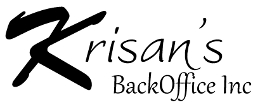
The Securities and Exchange Commission announced it intends to visit all advisors who have never been examined before 2015 ends. Now might be a good time to get your records in order.
In my 20+ years of working with PortfolioCenter, I have assisted my managers in many of SEC and state audits. It seems I go through at least one audit a year with someone.
The good news: all my managers have passed their audits with flying colors. The bad news: the auditors always find something to complain about — always, every time.
Many articles on preparing for an SEC audit provide general advice like “keep good records,” “stay organized” and “be honest.” While helpful, what exactly do you need to keep organized and be honest about?
Here is a list I’ve complied over the years based on the information requested from managers I’ve assisted through audits. Be warned, this list is not a comprehensive and different states and different auditors may request different items. But this is a good start.
About your Company
- A current organizational chart showing ownership and officers
- A list of all current employees
- A list of any employees who have terminated during the review period, including why they left
- A list of all outside business activities by current employees
- A list of all entities affiliated with the you and your company
- All documents concerning any complaints, arbitration and/or lawsuits (opened, closed and pending)
- A copy of your financial statements (including a balance sheet, trial balance and income statement) for the most recent fiscal year
- Any offering and/or operating documents for unregistered or pooled investment vehicles and financial statements related to them
About your Documents and Marketing
- A copy of Advisors Form ADV, Part 2A and B
- An example of a current standard client advisory contract and any sub-advisory agreements with other investment advisors
- Copy of powers of attorney or discretionary authority used with clients if this information is not in your advisory contracts
- Copies of any risk management documents used to assess risks in client accounts
- Copies of promotional brochures, pamphlets, etc routinely furnished to prospective clients
- Documents related to all solicitation arrangements
- Copies of your compliance policies and procedures including anti-money laundering procedures
- How you handle proxy voting for your clients
- Your policies and procedures for addressing client privacy and data security
- A copy of your disaster recovery plan
- A copy of your code of ethics and insider trading policies
About your Clients
- A Master list of all your clients’ holdings showing the aggregate number of shares and market value for each holding
- A list of basic information about all current clients, including account number, name, current balance, how fees are calculated, etc.
- How many clients you have in each state.
- A list of clients lost during the period under review and the reasons why
- A list of clients gained during the examination period and their inceptions dates and any third-party who referred them
- A list of “wrap-fee” clients listed by SMA program
- List of clients for whom you act as an trustee, co-trustee or successor trustee
- An acknowledgment from your custodian(s) that they send statements directly to your clients
- A trade blotter for the time period under review
If you are deemed to have custody of client funds, that kicks off another set of lists including a list of all such clients, the current market value of all assets in your possession, the physical location where such assets are held, and whether the client receives account statements from a custodian.
Be careful how you handle client passwords. One of my managers who logged on as her client to retrieve a statement for manual entry was deemed to have custody of those assets. The auditor ruled that simply having the client’s password gave her custody.
Need Help?
